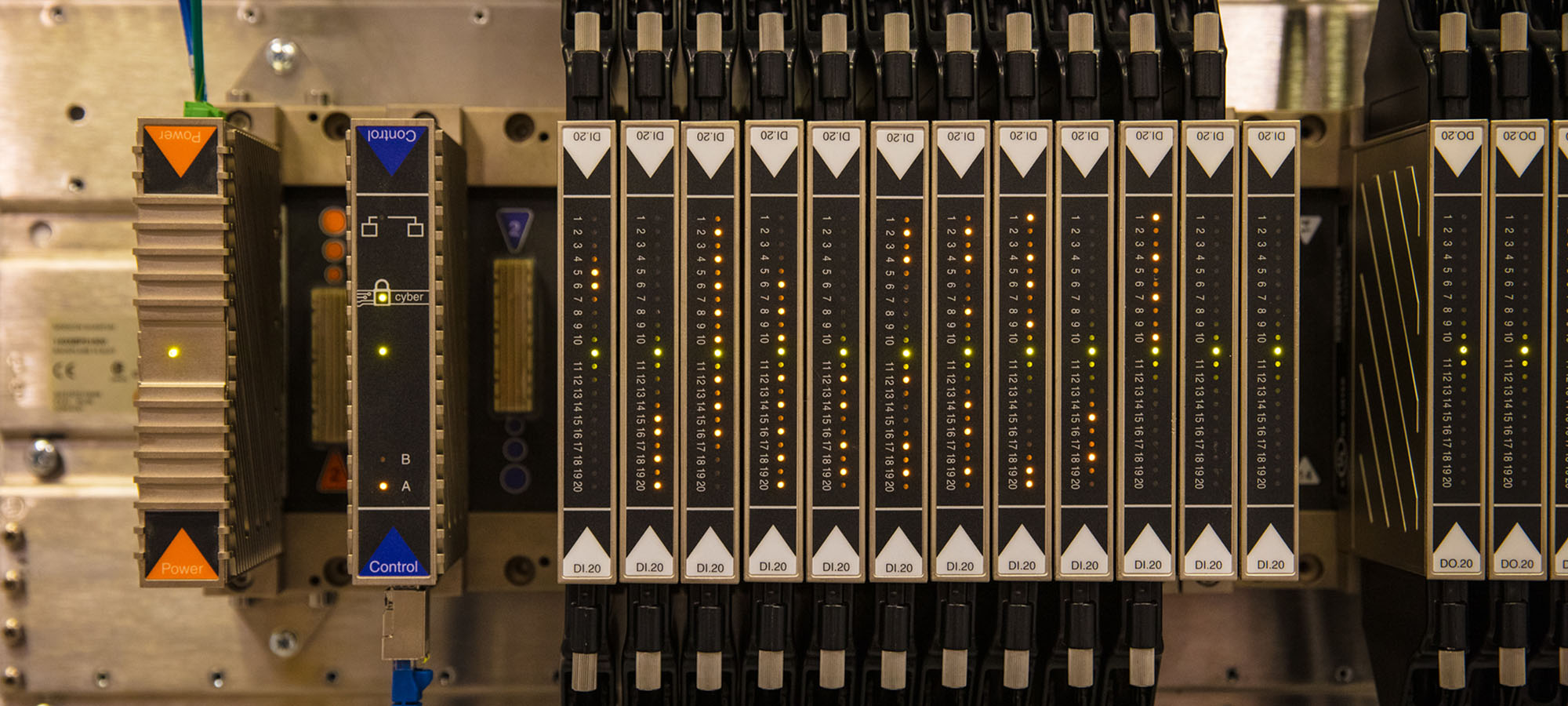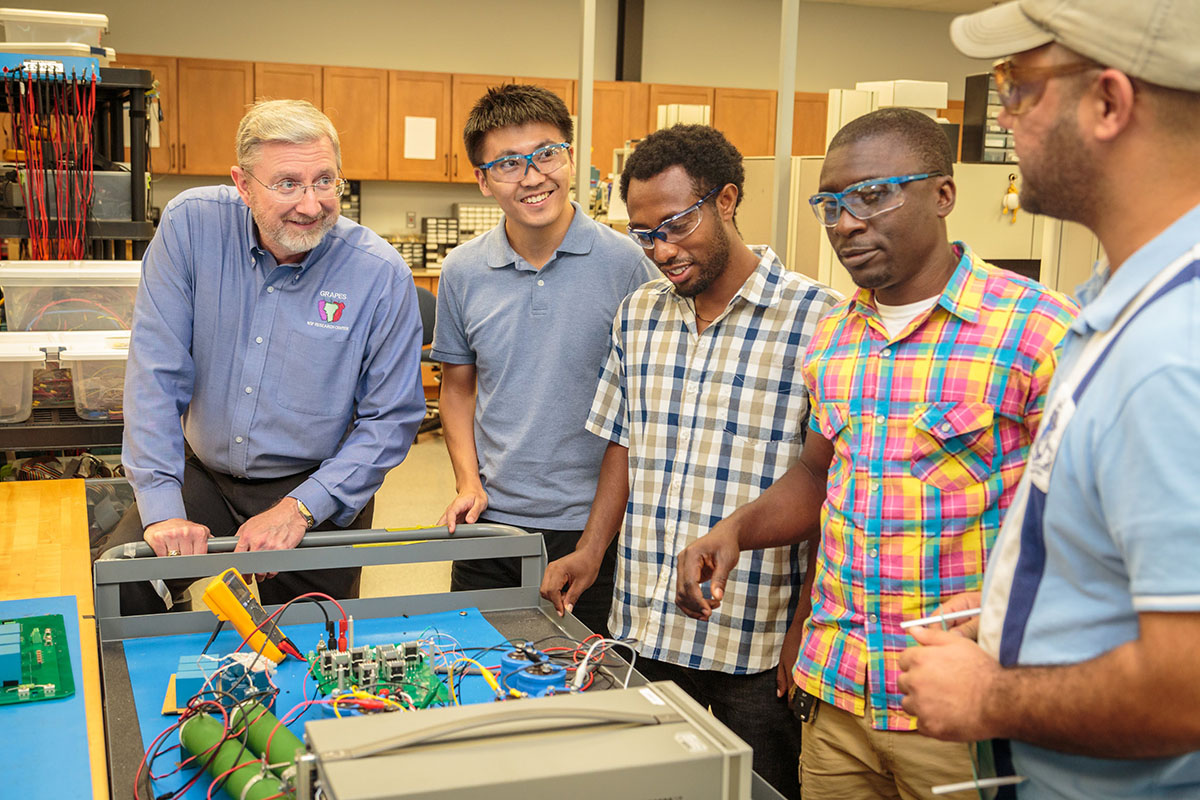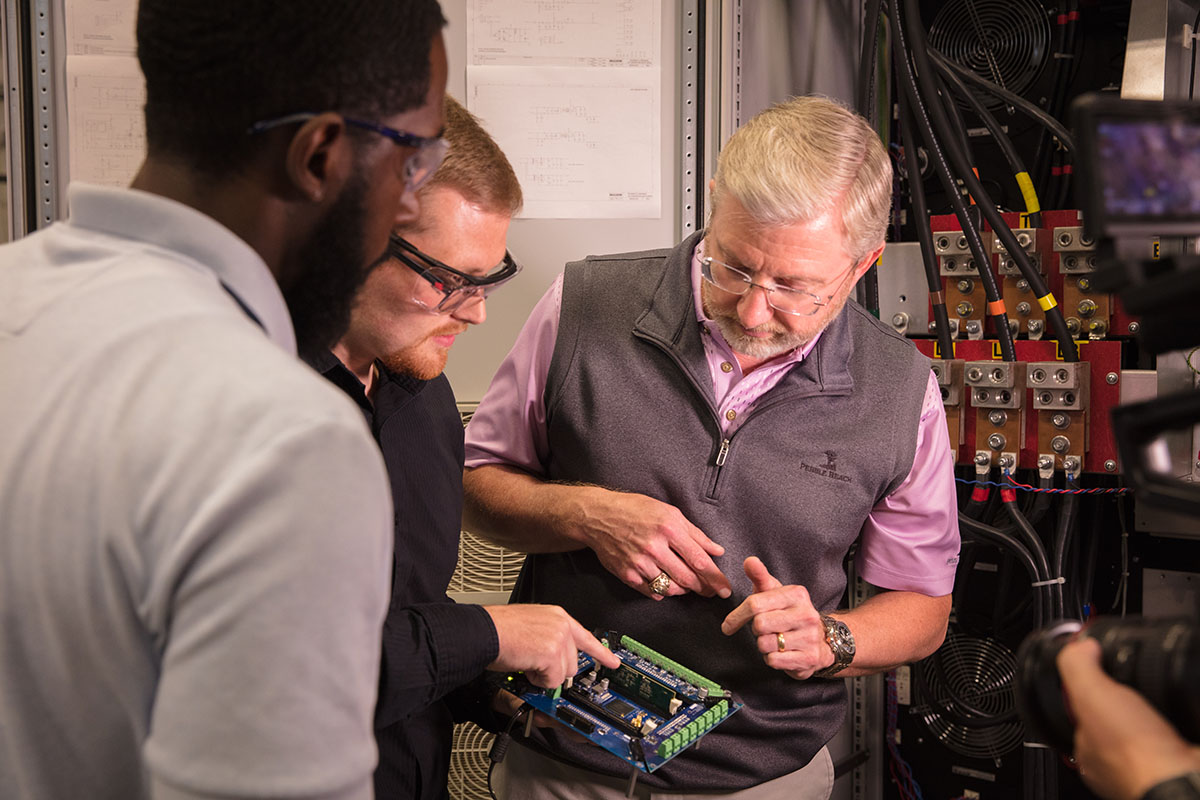
Power Struggles
The U.S. power grid is the single most attacked sector of our country and faces thousands of threats each day. Most go unreported to the general public, but all must be addressed to ensure the safety of our country and power supply. The good news is that experts like Alan Mantooth and the University of Arkansas Power Group stay a step ahead through their work to secure the nation’s power grid.
“These attackers want to predict our responses by learning and observing what happens when we’re attacked,” he said. “They know that cutting power cuts communications, which – in turn – creates chaos. We focus on ways that the attackers could get in. We find the holes and then propose how those can be defended in industry.”
“We focus on ways that the attackers could get in. We find the holes and then propose how those can be defended in industry.”
So, as prey for an attack, how do you develop better camouflage? One of the best defenses is to design products with security in mind from the beginning. Mantooth refers to this as “cyber hardened by design” and says it’s a much more efficient way to prevent attacks than searching for holes after something is already produced.
“This is also quite different than working solely with power electronics, where your primary enemies are time and temperature,” he says. “With cyber security, you’re facing human adversaries too.”
Superpower Centers
SEEDS, the Cybersecurity Center for Secure Evolvable Energy Delivery Systems, develops innovative cybersecurity technologies, tools and methodologies for the energy sector. Mantooth serves as the principal investigator and director for the group, which started in 2015 with a $12.2 million grant from the U.S. Department of Energy. Since then, the center has studied everything from countering data integrity attacks to early insider threat detection and continues to be funded by the Department of Energy and Department of Homeland Security. The students involved in SEEDS participate in hands-on research experience in an interdisciplinary environment and interact with industry professionals.
“Some of our students absolutely love working on cyber security,” Mantooth says. “They are challenged to think like criminals with the end goal of protecting us all.”
 Partners in SEEDS include the University of Arkansas – Little Rock, the Massachusetts
Institute of Technology, Carnegie Mellon University, Arkansas Electric Cooperative
Corporation and Florida International University.
Partners in SEEDS include the University of Arkansas – Little Rock, the Massachusetts
Institute of Technology, Carnegie Mellon University, Arkansas Electric Cooperative
Corporation and Florida International University.

Mantooth is also the executive director of GRAPES, the research center for GRid-Connected Advanced Power Electronics systems, which was founded in 2009 thanks to the National Science Foundation’s Industry/University Cooperative Research Center program. GRAPES examines how to improve power electronics technology by integrating it with the needs of industry and the power grid as a whole, and the center’s work includes everything from solar inverters to bi-directional power flow – a particularly important facet because it impacts the safety of linemen.
 Collaborators in GRAPES consist of engineering faculty from the University of Arkansas,
University of Wisconsin-Milwaukee, RWTH Aachen University, Korea University and Yonsei
University, along with 15 industrial and governmental members.
Collaborators in GRAPES consist of engineering faculty from the University of Arkansas,
University of Wisconsin-Milwaukee, RWTH Aachen University, Korea University and Yonsei
University, along with 15 industrial and governmental members.
In addition to protecting the power grid from human-controlled attacks, the center investigates how to maintain the greatest possible “up time” during natural disasters. Like cyberattacks, these can’t always be anticipated. Therefore, it’s critically important that anyone working with the power grid or power electronics for the grid is properly trained to handle any issues that may arise.

NCREPT, or the National Center for Reliable Electric Power Transmission, rounds out the trio of centers that spark research for protecting the power grid. The 12,500 square foot, $10 million facility offers a national-caliber testing facility with the capability of testing truck bed-mounted equipment in its bays. It is the largest testing center of its kind housed at a U.S. university. In 2020, Mantooth received a $3.6 million award from the U.S. Department of Energy Solar Energy Technologies Office to advance technologies integrating cyber-secure solar power systems into the national power grid. Mantooth, who is executive director of the facility, and his research team will develop cybersecurity systems for photovoltaic energy technology and devices, which convert light into electricity, and address issues such as supply-chain security, real-time intrusion detection methods, identifying and mitigating vulnerable spots, control system security and safety protocols.
“It’s all defense and no offense,” Mantooth, a former Razorback football player, muses. “We are managers of an asset that’s a constant target.”
 Mantooth’s team includes researchers from the University of Georgia, University of
Illinois at Chicago, Texas A&M University – Kingsville, National Renewable Energy
Laboratory, Argonne National Laboratory and General Electric. Two Arkansas companies,
Ozarks Electric Cooperative and Today’s Power, are also contributing to the project.
Mantooth’s team includes researchers from the University of Georgia, University of
Illinois at Chicago, Texas A&M University – Kingsville, National Renewable Energy
Laboratory, Argonne National Laboratory and General Electric. Two Arkansas companies,
Ozarks Electric Cooperative and Today’s Power, are also contributing to the project.